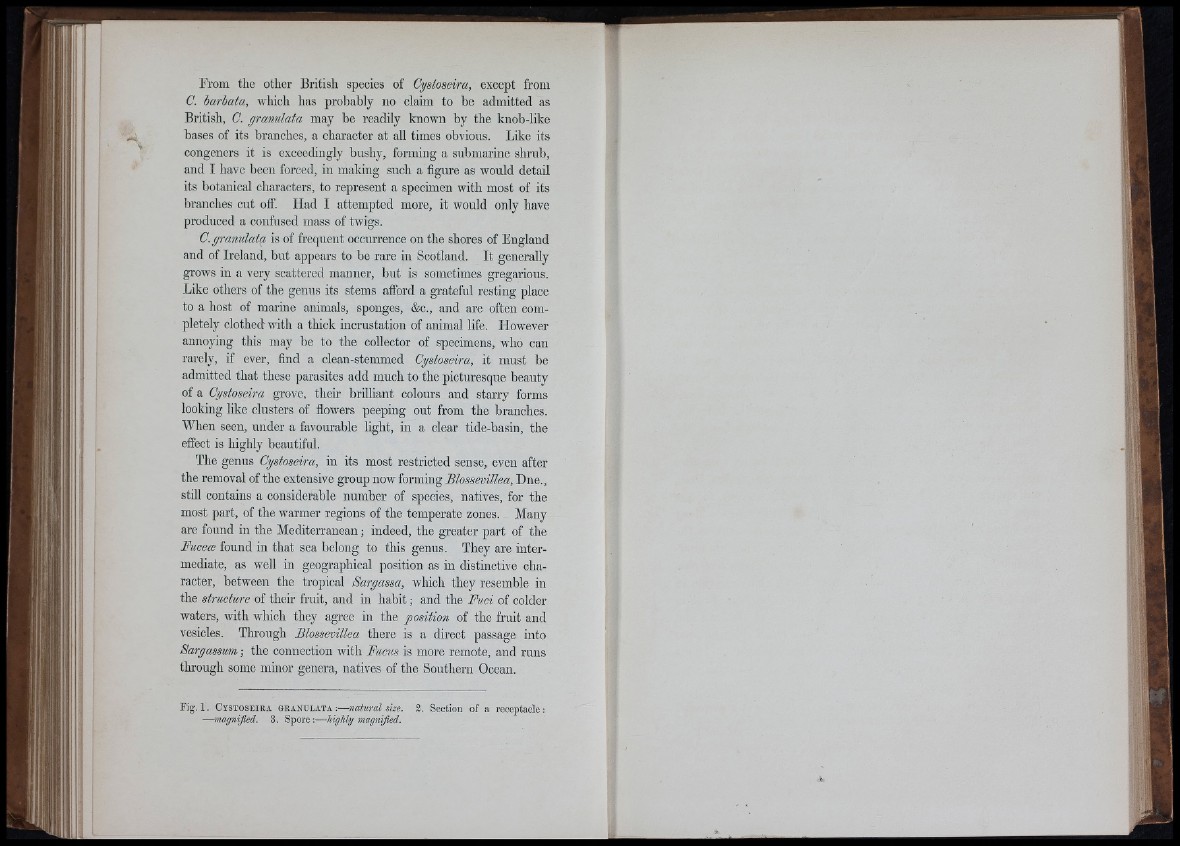
From tiie otlier British species of Cystoseira, except from
C. barbata, wliich has probably no claim to be admitted as
British, C. granulata may be readily known by the knob-like
bases of its branches, a character at all times obvious. Like its
congeners it is exceedingly busby, forming a submarine shrub,
and I liave been forced, in making such a figure as would detail
its botanical characters, to represent a specimen with most of its
brancbes cut off. Had I attempted more, it would only bave
produced a confused mass of twigs.
C. granulata is of frequent occurrence on tbe shores of England
and of Ireland, but appears to be rare in Scotland. It generally
grows in a very scattered manner, but is sometimes gregarious.
Like others of the genus its stems afford a grateful resting place
to a host of marine animals, sponges, &c., and are often completely
clothed-witb a thick incrustation of animal life. However
annoying this may be to tbe collector of specimens, who can
rarely, if ever, find a clean-stemmed Cystoseira, it must be
admitted tbat these parasites add much to the picturesque beauty
of a Cystoseira grove, their brilliant colours and starry forms
looking like clusters of flowers peeping out from tbe branches.
When seen, under a favourable light, in a clear tide-basin, the
effect is highly beautiful.
The genus Cystoseira, in its most restricted sense, even after
the removal of the extensive group now forming Btossevillea, Dne.,
still contains a considerable number of species, natives, for tbe
most part, of the warmer regions of tbe temperate zones. Many
are found in the Mediterranean ; indeed, the greater part of the
Fiiceæ found in that sea belong to this genus. They are intermediate,
as well in geographical position as in distinctive character,
between the tropical Sargassa, which they resemble in
the structure of their fruit, and in habit ; and the Fuci of colder
waters, with which they agree in the position of the fruit and
vesicles. Through Ftossevillea there is a direct passage into
Sargassum ; the connection with Fucus is more remote, and runs
through some minor genera, natives of the Southern Ocean.
rii I
Fig. 1. CrSTOSEIKA GRANULATA
—magnified. 3. Spore;—
—natural size. 2. Section of a receptacle :